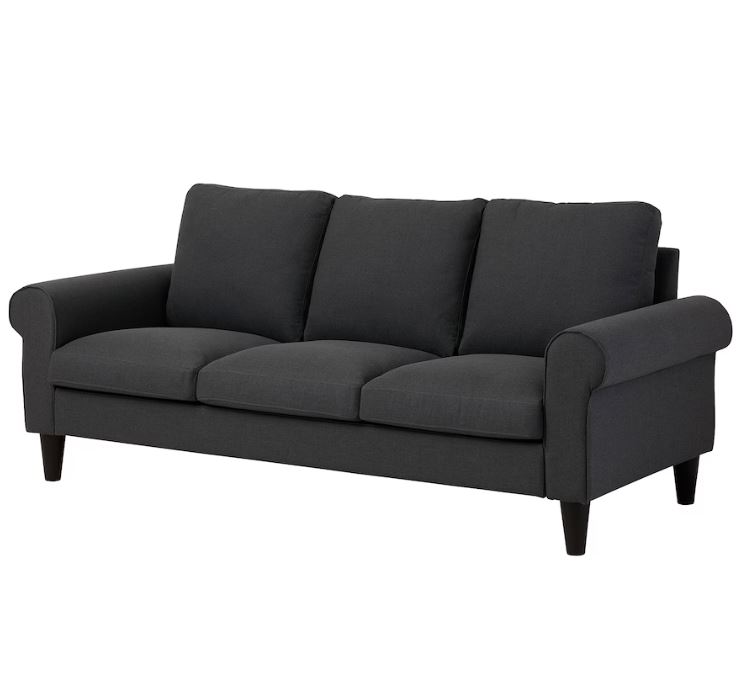In a world where conscious consumerism is becoming the norm, furniture design is undergoing a much-needed transformation. More than ever, homeowners are looking for pieces that not only complement their aesthetic but also align with their values—particularly when it comes to sustainability. Sofa upholstery, a crucial element of home décor, is now at the forefront of this eco-conscious shift.
Fortunately, sustainable doesn’t mean sacrificing comfort or style. Today’s eco-friendly upholstery fabrics are as beautiful, durable, and luxurious as traditional materials—if not more. In this post, we’ll explore the best sustainable sofa upholstery options, why they matter, and how to choose fabrics that are both environmentally friendly and design-forward.
Why Sustainable Upholstery Matters
The furniture industry is a major contributor to waste and pollution. Traditional upholstery often involves:
Petroleum-based synthetics (like polyester or nylon)
Toxic dyes and finishes
Non-recyclable foam and padding
High carbon emissions from manufacturing and transport
By choosing sustainable upholstery, you reduce your environmental footprint while supporting ethical production and healthier indoor air quality. It’s a small change that makes a big difference—both globally and in your own living space.
Top Eco-Friendly Upholstery Fabrics in 2025
Let’s dive into the materials leading the charge in sustainable sofa upholstery:
Recycled Polyester (rPET)
What it is: Made from recycled plastic bottles, rPET transforms waste into usable, durable fibers.
Why it’s great:
Keeps plastic out of landfills and oceans
Requires less energy to produce than virgin polyester
Can mimic the softness of velvet, chenille, or suede
Available in a wide range of colors and patterns
Ideal for: Families and pet owners looking for easy-clean, wear-resistant upholstery with eco-cred.
Organic Cotton
What it is: Cotton grown without synthetic fertilizers or pesticides, certified organic by standards like GOTS.
Why it’s great:
Biodegradable and breathable
Non-toxic, hypoallergenic, and gentle on skin
Less water- and chemical-intensive than conventional cotton
Ideal for: Light, airy interiors and people with allergies or sensitive skin.
Hemp
What it is: A fast-growing, low-impact plant fiber with ancient roots and modern appeal.
Why it’s great:
Extremely durable and UV-resistant
Naturally antibacterial and mildew-resistant
Requires minimal water and no pesticides to grow
Ideal for: Casual, earthy styles such as rustic, boho, or minimalist interiors.
Linen (and Linen Blends)
What it is: A natural fiber derived from flax plants, often blended with cotton or hemp for extra softness.
Why it’s great:
Fully biodegradable and breathable
Moisture-wicking and temperature-regulating
Grows well with minimal irrigation or chemicals
Ideal for: Scandinavian or coastal designs with a relaxed, elegant vibe.
Eco-Leather (Vegetable-Tanned or Recycled)
What it is: Leather made without chromium or harsh chemicals, or produced from recycled leather scraps.
Why it’s great:
Lower environmental impact than traditional leather
Biodegradable if vegetable-tanned
Durable and stylish with a smaller footprint
Ideal for: Contemporary or industrial spaces looking for sophistication and longevity.
Certifications to Look For
Not all “green” claims are created equal. Here are credible certifications to ensure you’re buying genuinely sustainable upholstery:
GOTS (Global Organic Textile Standard) – Ensures organic status and socially responsible manufacturing.
OEKO-TEX® Standard 100 – Certifies textiles are free from harmful chemicals.
Greenguard® – Verifies low chemical emissions for better indoor air quality.
Cradle to Cradle Certified® – Indicates a product is designed for a circular economy.
Always check labels or ask your supplier for certification details when choosing upholstery fabrics.
Style Meets Sustainability
The beauty of today’s eco-friendly fabrics is that they don’t compromise on design. In fact, many top interior designers now prefer sustainable textiles because of their natural textures, earthy color palettes, and timeless appeal.
Popular style trends with sustainable upholstery include:
Soft neutrals and muted earth tones
Textured weaves and raw, natural finishes
Layered materials (e.g., cotton-linen blends)
Vintage-inspired looks with modern performance
With the rise of slow design and timeless interiors, sustainable fabrics are more on-trend than ever.
Caring for Sustainable Upholstery
Eco-friendly doesn’t mean high-maintenance. Most sustainable fabrics are naturally strong, breathable, and easy to clean, especially when blended or treated with non-toxic finishes.
Tips for longevity:
Vacuum regularly to prevent dust buildup
Spot clean with mild, eco-friendly detergents
Avoid direct sunlight to reduce fading
Rotate cushions to maintain even wear
Proper care ensures your sustainable upholstery looks fresh for years, further reducing environmental impact by extending its lifespan.
Where to Buy Sustainable Upholstery
Look for brands that specialize in eco-conscious furniture or offer green upholstery options. Some leading names in 2025 include:
Floyd – Known for modular, sustainable sofas made with recycled fabrics
Sabai – Offers sofas made with FSC-certified frames and recycled upholstery
Medley – Focuses on natural materials, organic fabrics, and non-toxic finishes
West Elm – Offers a growing line of OEKO-TEX® certified upholstery options
Local upholstery shops may also offer custom reupholstery using sustainable fabrics—perfect for refreshing old furniture rather than buying new.
Conclusion
Choosing sustainable sofa upholstery Abu Dhabi is no longer a niche decision—it’s a smart, stylish, and responsible way to furnish your home. With a growing variety of eco-friendly materials, beautiful designs, and trusted certifications, you can embrace comfort and elegance while minimizing your environmental impact.
In 2025 and beyond, sustainability isn’t a limitation—it’s a design advantage.

